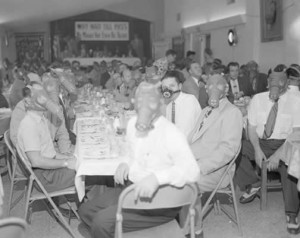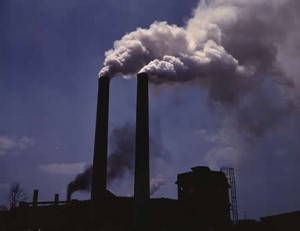
Los Angeles has the dubious distinction of having the worst short and long-term particle pollution in the nation as well as the most ozone. But that could begin to change with an extensive new plan to target greenhouse gases put forward by the Obama Administration on Wednesday.
The U.S. Environmental Protection Agency announced a milestone move to curb greenhouse emissions, just one day after a major chemical testing initiative we covered in “Chem and Get It.” But as hopeful as the new plan sounds, it seems to directly conflict with the Clean Air Act by giving smaller polluters a pass.
At the same time, a major California lumber company cashed in handsomely just a week after the state’s Governor Arnold Schwarzenegger quietly pushed through new rules that would reward the timber industry for not cutting down its trees.
The result is a murky outlook for cleaning up the nation’s toxic air and combating global warming, one complicated by an obeisant government and obstinate industry. There are certain to be many more bad air days in America.
EPA Administrator Lisa Jackson announced the new program, appropriately enough, in Los Angeles:
“By using the power and authority of the Clean Air Act, we can begin reducing emissions from the nation’s largest greenhouse gas emitting facilities without placing an undue burden on the businesses that make up the vast majority of our economy,” said EPA Administrator Jackson. “This is a common sense rule that is carefully tailored to apply to only the largest sources — those from sectors responsible for nearly 70 percent of U.S. greenhouse gas emissions sources. This rule allows us to do what the Clean Air Act does best – reduce emissions for better health, drive technology innovation for a better economy, and protect the environment for a better future – all without placing an undue burden on the businesses that make up the better part of our economy.”
That may seem like a common sense rule but it doesn’t conform with the Clean Air Act which sets the threshold 100 times lower at 250 tons. This makes the new initiative vulnerable to the inevitable court challenges that big industry is bound to set in motion making us wonder why the Administration would risk this legally while at the same time gutting the breadth of these new rules.
Republicans don’t mind, however. “It’s kind of hard to see that this will stand up in court because it does seem to fly in the face of the statute,” said Jeff Holmstead on National Public Radio yesterday. Holstead was President Bush’s EPA air pollution chief and now is a lobbyist for big businesses, like electric companies that are wary of the EPA regulating greenhouse gas emissions. “The big problem is just concern that this will delay a lot of projects that people would like to do.”
The new rules may cover the emissions of the group of six greenhouse gases that may be covered by an EPA rule controlling or limiting their emissions including carbon dioxide, methane, nitrous oxide, hydrofluorocarbons, perfluorocarbons and sulfur hexafluoride.
Jackson, however, does not seem daunted by the challenges posed by the Prevention of Significant Deterioration and Title V Greenhouse Gas Tailoring Rule:
“In the coming months, we will continue working together with regions, states and localities, as well as Congress, to put climate solutions into action. We will explore cost-effective ways to expand the reach of energy efficiency and innovation to key sectors of the economy, where opportunities are very real. In addition to the national fuel economy proposals for light-duty vehicles, we see the potential for significant emissions cuts in other transportation sectors, which together account for about 28 percent of the nation’s emissions. We are also exploring moving forward with New Source Performance Standards so that power plants, refineries, cement manufacturing and other stationary sources are using energy efficient motors and heaters – helping to spark new innovations and new ways of doing business that will ensure our economic and environmental sustainability for generations to come.
“Let me close on that last point: generations to come. Our chief responsibility in all of this is to leave our planet a better place. Whatever our political beliefs are, wherever we come from, and whatever strategy we think is best, a concern for our future generations is – ultimately – what brings us all here.”
What brings about $10 million to Sierra Pacific this week is a controversial gift care of Governor Schwarzenegger who on Wednesday began a three-day climate summit in Los Angeles. “This agreement and the partnerships formed at this summit will help people around the world reduce the 20% of global warming emissions that come from deforestation,” the governor said in a short written announcement.












Recent Comments